- MENASHEH
- BASHAN/GOLAN HEIGHTS
- NAVE
- GILGAL
- JORDAN RIVER VALLEY
- SAMARIA
- SHECHEM

The western portion of the tribe took possession of its land during the time of Joshua. Roughly, this territory consisted of the lands from the Carmel mountain range and across the Jezreel Valley to the Jordan, including the towns of Megiddo and Bet She’an in the north, and going southward, until the northern border of Jaffa in the west, the southern border of Shechem in the center, and the southern border of Gilgal in the east, thus, consisting of the bulk of the Jordan Valley. The cities of Menasheh on the west side of the Jordan, many of which were shared with the tribe of Ephraim, are listed in Joshua 17. (I’ve divided these cities between those behind, what we know today, as the “green line” from those outside of it.) Those behind the “green line” are as follows: Bet She’an, Dor, Ein Dor, Ible’am, Megiddo, Michmetah, and Taanach. In, what is known today as the West Bank, the cities were: Ein Tappuah, Gilgal, Shechem, and Shomron.
---BASHAN/GOLAN HEIGHTS
After the Biblical period, and in course of time, various Druze and Arab clans as well as Circassians from the Caucasus migrated to the area and some Jews also remained. In the 7th century, the indigenous Jews were joined by Jewish refugees from Khaibar in Arabia, who were expelled by Mohammed, especially the tribes of Kainuka and Wuld Ali, who settled among the native Jews in Edrei. Later joined by other Jews, Edrei became a rabbinic center in the Middle Ages. Early in the 14th century, questions arose as to whether certain parts east of the Jordan, which included the Edrei area, were halachically, a part of the Land of Israel and therefore, obligated to observe the laws that only applied to Israel. After constant debate, which lasted for over two centuries, it was decided in the affirmative and Edrei and the surrounding area were officially proclaimed a part of the Land of Israel.
During the 11th century, there was also a relatively large Jewish community in Banias. They were referred to as Baniasites who were frequently mentioned in the documents of the Cairo Geniza. Since Babylonian Jews had also settled in Banias, the community split into Palestinians and Babylonians, who differed in their version of prayers. These two sections existed throughout the 12th century. A Karaite pseudo-messiah, Solomon Hakohen, was reported as having appeared in Banias in 1102 and the famous proselyte Obadiah the Norman passed through the area. However, Benjamin of Tudela, in c. 1170, mentions no community at all and it is possible that it had ceased to exist during the Crusader period. Later, Banias was re-inhabited by Jews as were some of the other villages in the Bashan area. During the early Ottoman period, Banias still had a Jewish population as attested by a document from 1624 which mentions the murder of a Jewish physician, by the name of Elijah ha-Kohen, by an Arab sheikh. Apparently, by the 19th century, no Jews were left in the Golan/Bashan area and it was, in general, only sparsely inhabited.
In 1880, Laurence Oliphant published Eretz ha-Gilad (The Land of Gilead), which described a plan for large scale Jewish settlement in the Golan, but the Turks snubbed the scheme. In 1884 there were still open stretches of uncultivated land between villages in the lower Golan, but by 1886, members of the old yishuv in Safed formed the Bet Yehuda Society and purchased 14,000 dunams of land near the Circassian village of Ramthaniya, in the central Golan. But due to financial hardships and the long wait for a kushan (Ottoman land deed) the village, Golan be-Bashan, was abandoned after a year. Soon afterwards, the society regrouped and purchased land in the nearby Bedouin village of Bir Shaqum in the southern Golan. Thus, the village of Bnei Yehuda was established. Between 1891 and 1894, Baron Edmond James de Rothschild purchased nearly 80,000 dunams (30 miles sq.) of land consisting of 16 villages in, what is today, southern Syria for Jewish settlement. Most of the land was situated in the eastern Golan and straddling both sides of the Nahr el Allan. Today, it lies just a few kilometres from the 1967 lines, inside Syria where Jews are forbidden to live.
The Russian Agudat Achim Association acquired land in several locations in the districts of Fiq and Daraa and at Jillin where a farm was built and extensive eucalyptus groves were planted. Other tracts of land were acquired by Jewish organizations based in Romania, Bulgaria, the United States, and England, but Jewish settlement in the area remained slow and tenuous. Meanwhile, Jews had managed to build a road stretching from Lake Huleh to Muzayrib and by the mid-1890s most of the Golan had become owned and cultivated by a variety of peoples. A Jewish village called Tiferet Binyamin was set up on lands at Saham el-Jolan by the Shavei Zion Association based in New York, but the project was abandoned after a year when the Turks issued an edict in 1896 evicting the residents on the grounds that they were not Ottoman citizens. A later attempt to resettle the land with Syrian Jews who were Turkish citizens, also failed. In 1899, the Pasha of Damascus expelled the Jews from all of Rothschild's estates. Between 1904–08, a group of Crimean Jews settled in the Bethsaida Valley, initially as tenants of a Kurdish proprietor with the prospects of purchasing the land, but the arrangement faltered. Jewish settlement in the region was abandoned over time, either due to Arab hostility and Turkish bureaucracy, disease, or economic difficulties.
Until 1920, a few Jews returned to the Golan. But that year witnessed the first of a series of Arab pogroms which raged throughout the country resulting the massacres and expulsions of Palestinian Jews whether they were immigrants or not. Bnei Yehuda was one such victim community when, in 1920, the last remaining inhabitants left following an Arab attack. But the land itself was still owned by Jews. From 1921–1930, when the British authorities in Palestine gave that piece of land to the French authorities in Syria, the Palestine Jewish Colonization Association (PJCA) obtained the deeds to the Rothschild estate and continued to manage it, collecting rents from the Arab peasants living there. In 1944 the JNF bought the Bnei Yehuda lands from their Jewish owners. Subsequently though, they lost a lawsuit with the Arabs of Bir Shaqum regarding the Jewish ownership of the land. In that year, the Syrian Land Settlement Campaign refused to recognize the foreign owned PJCA as the legal owners of the land and the Syrian government confiscated it without compensation on the grounds that "it was contrary to Syrian policy to allow Jews to own land in Syria." The JNF still lays claim to the land.
In the period between Israel’s War of Independence and the Six Day War, the Arab countries, including Syria, refused to recognize Israel as a sovereign nation. During this time, the Syrians constantly harassed Israeli border communities by firing artillery shells from their dominant positions on the Golan Heights. In October 1966 Israel brought the matter up before the United Nations. Five nations sponsored a resolution criticizing Syria for its actions but it failed to pass due to a Soviet veto.
Israel’s former Prime Minister Golda Meir summed up life in Israel’s northern border communities adjacent to the Golan as follows:
The Syrians seemed bent on an escalation of the conflict; they kept up an endless bombardment of Israeli settlements below the Golan Heights, and Israeli fishermen and farmers faced what was sometimes virtually daily attacks by snipers. I used to visit the settlements occasionally and watch the settlers go about their work as though there’s nothing at all unusual in plowing with a military escort or putting children to sleep – every single night – in underground air raid shelters.
After the Six-Day War broke out in June 1967, Syria's shelling greatly intensified. The war on the northern front ended when the Israeli army captured the Golan Heights. Israeli settlement in the Golan began soon after the war with the establishment of Merom Golan the following month. By 1970 there were 12 such communities.
---NAVE
This is a small village on the east side of the Jordan almost nothing of which is known. Of the few records found about the place, it was probably allotted to the half-tribe of Menasheh and might be identified with the Biblical village of Nobah as mentioned in Number 32:42. During the Byzantine period, it was probably a seat of Torah learning and in the 5th century, Tanhuma bar Abba, amora of the 5th generation, lived here. It still contained a small Jewish community in the Middle Ages, but eventually, the Jews moved away. Today, the village has no Jews and is likely never to have Jews again as it is located in, what is today, the Kingdom of Jordan.
---GILGAL
The first camping-place of the Israelites in the land west of the Jordan; the place to which they could retreat during their struggles for conquest. According to Joshua 5:9, the place was called “Gilgal” because it was here that the lord said to Joshua, “I have rolled away (Heb. “Gilgal”) the reproach of Egypt from off you…” After the allotment of land to the tribes of Israel, Gilgal became part of Menasheh territory, almost adjacent to the border of Benjamin and right next door to Jericho which was part of Benjamin. The Ephraimite sanctuary, so severely condemned by the Prophets, was probably to be identified with the "Gilgal" of the Joshua narrative. It was also mentioned as a place of sacrifice in I Sam. 10:8. Its name could still be found on the hill Jaljul, east of Jericho but some scholars believe that it is to be identified with Khirbet al Mafjir on the eastern border of Jericho.
Modern Gilgal was established in 1970 as a Nahal settlement and was converted to a civilian kibbutz in 1973.
---JORDAN RIVER VALLEY
In Biblical history the Jordan appears as the scene of several miracles, the first taking place when the part of the river near Jericho, was crossed by the Israelites under Joshua (Josh. Chapt. 3). Later the two tribes of Gad and Reuben and the half tribe of Menasheh that settled east of the Jordan built a large altar on its banks as "a witness" between them and the other tribes (Josh. 22:10). About half the river formed the boundary line between the part of Menasheh on the west side of the river, and the tribes on the east. The tribes of Yissasschar and Naphtali bordered the remainder of the river. The Jordan was crossed over on dry ground by Elijah and Elisha, each of whom divided the waters with a stroke of the mantle (II Kings 2:8, 14).
Before the coming of the Arabs, many Jewish farms dotted the Jordan Valley. But due to persecutions by Crusaders and later by Arabs and other Muslims, the Jews moved away. For centuries thereafter, the Valley became the domain of various Bedouin tribes who often warred against the Mamelukes, Turks, or other Bedouin tribes.
After the War of Independence, the Valley found itself split in two. The northern half, stretching from Tirat Zvi north to the Jordan’s headwaters, became part of Israel. The southern half which stretched down to the Dead Sea and beyond, was under Arab occupation. Jews were banned from the southern half for the next 19 years and only began to return immediately after the Six Day War. The first town established in the Valley was Mechola in 1967 by Bnei Akiva members and named after the biblical city of Abel-mechola (1 Kings 19:16), which was located in the area. The village of Argaman followed and was established in 1968 as a Nahal settlement. It was converted to a civilian moshav in 1971. Its name is an acronym for Arik Regev and Gad Mandel, two Nahal commanders who were killed whilst pursuing terrorists. Massua was established in 1969 as a Nahal settlement, and was converted to a civilian moshav by a HaOved HaTzioni gar'in five years later. Next came Gilgal as was explained above. Since the founding of Gilgal, 17 other communities sprang up in the Valley, not counting that of Maale Efrayim, which is a separate local council and “capital” of the Valley.---SAMARIA
Samaria (Shomron) was, for a time, the capital of the northern Kingdom of Israel. Although not mentioned in Joshua’s allotment of territory to the tribes of Israel, the city definitely fell in the territory of western Menasheh, just north of Shechem. It was built by Omri, in the seventh year of his reign, on the mountain Shomron; he had bought this mountain for two talents of silver from Shemer, after whom the city was named (I Kings 16:24). After the return from the Babylonian Captivity, the name Samaria, was eventually applied to most of the area that was the northern Kingdom of Israel. The inhabitants at the time, were thus called “Samaritans (Shomronim). Judah kept its name which was later Hellenized to “Judea”. Hence, its inhabitants were called “Jews”.
Under Herod (whose wife was Mariamne) the city of Samaria became the capital of the whole district of Samaria, the city itself being known as Sebaste, the Greek equivalent of the Latin "Augusta," the city being named in honor of Augustus Cæsar. At the outbreak of the Jewish war it was attacked by the Jews. Josephus speaks of soldiers of Sebaste who served in Herod's army and who later sided with the Romans against the Jews. Sebaste is mentioned in the Mishnah where its orchards are praised. Under Septimius Severus it became a Roman colony, but with the growth of Neapolis (Nablus), it lost its importance.
In the fourth century Sebaste was a small town. Jerome records the tradition that Samaria was the burial-place of the prophets Elisha and Obadiah, as well as of John the Baptist. Benjamin of Tudela, however, does not relate that these tombs were shown to him; he states only that traces of Ahab's palace were still visible, and that he found no Jews in the place at all. After the Crusader period, Arab settlers migrated to the site and established the village of Sabastiyah. Visitors in the 19th century have noted that its population was estimated to have been about 400, almost all Arab Muslims and during the late Ottoman period, a train station was built in the village. Jews attempted to return to the site in late 1976 when Gush Emunim sought to establish a settlement at the Ottoman train station. The Israeli government did not approve and the group that was removed from the site would later found the town of Elon Moreh adjacent to Nablus/Shechem.
---SHECHEM
The city of Shechem is an ancient city within the southernmost portion of the territory of Menasheh between Mt. Ebal and Mt. Gerizim near the border with Ephraim. During the time of the Patriarchs, when the land was populated by the Canaanites, the site of Elon Moreh, just to the west of Shechem, became the first place in Canaan that Abraham rested and built an altar to god. In effect, the altar in Elon Moreh became to first Jewish place of worship in history. According to Genesis 33:18-19, the Patriarch Jacob, who, after his meeting with Esau, encamped in front of Shechem in the field which he bought for 100 pieces of money from Hamor, the prince of the country, and he called the place “El Elohei Yisrael”. It was then inhabited by the Hivvites. Jacob's arrival at Shechem marked a very important period in its history; for the rape of Dinah, daughter of Jacob, which took place there, resulted in the pillage of the city and the massacre of all the male inhabitants by Jacob's sons. This narrative shows also that Shechem was at that time a commercial center, and rich in sheep, oxen, and asses. The oak-tree under which Abraham had built an altar still existed in the time of Jacob, who hid under it the images and the earrings of the Shechemites. The surrounding territory afforded good pasturage; and therefore during Jacob's stay at Hebron his sons drove their flocks to Shechem. In the nearby Plain of Dotan, Joseph was sold, by his brothers, as a slave to Egypt. Later in life, Joseph was joined, in Egypt, by his brothers as well as by Jacob. After Joseph’s death, their descendants became slaves there, and when the Israelites returned to Canaan after their long sojourn, they reburied Joseph’s remains in Shechem. His tomb became a place of Jewish pilgrimage throughout the centuries.
After the exiled Jews returned from Babylonian captivity, Shechem became the religious capital of the Samaritans, whose temple was on Mount Gerizim. Thus, this city was to the Samaritans what Jerusalem was to the Jews. But for centuries afterwards, Jews and Samaritans lived side by side in the city in an, at times, uneasy coexistence.
Shechem seems to have been completely destroyed during the Jewish wars, and on its site another city was built by Vespasian (72 C.E.), to which he gave the name "Neapolis". During this time, there were still Jews and Samaritans living in the city which now had a growing Christian community. In the 7th century, various Arab tribes settled here and the name “Neapolis” was, therefore, Arabized, to “Nablus”, a name still used by Arabs today.
At the beginning of the Crusader period, the Jewish community of Nablus addressed a formal letter to Rabbi Abiathar, Nagid of Egypt, who also ruled over the Land of Israel, asking for positive information concerning the messianic era due to the Crusader wars presently being fought. But as the Crusaders secured its control over Israel, the Jews of Shechem were persecuted and driven out. The Samaritans, on the other hand, were not, and kept as a tolerated minority, probably due to their positive portrayal in the New Testament. Pilgrimages by Jews to the Tomb of Joseph, however did not cease. This fact is first mentioned by Benjamin of Tudela who also relates that in his time there were no Jews at all in Nablus but a large Samaritan community and that they had possession of the tomb. At a later time, the city was also visited by Rabbis Shmuel ben Shimshon (of either Joinville or Lunel) in c. 1210, Menachem ben Peretz of Hebron in 1215, Rabbi Jacob of Paris in 1258, and Ashturi Farhi in 1320. The traveler Isaac Ḥelo (14th cent.) says that people came from afar to Nablus to visit the tomb of Joseph and Jacob's well, and that there were in the place few Jews, but many Samaritans. In around 1550, the Jewish author of the "Yiḥus ha-Ẓaddiḳim", Gershon ben Asher, made a pilgrimage to the Land of Israel and, while on a visit to Shechem, precisely placed the Tomb in the village of Al-Balaṭah, near Nablus, adding that visitors recite over the tomb, Psalms 77, 80, and 81, The author of "Yiḥus ha-Abot" said that the village Al-Balaṭah, which contained Joseph's tomb, is a Sabbath-day's journey (2,000 cubits) north of Nablus.
In the fourteenth century there occurred what may almost be called a literary renascence among the Samaritans, due to the initiative of the high priest Pinhas ben Yosef, who held office from 1309 to 1363 and who was evidently a man of high character and strong influence. He was assisted by his sons Eleazar and Avisha, and by the writer Yosef Harabban. They wrote liturgical works in Hebrew rather than in Aramaic, the language of prayer of the Samaritans. Abu al Fath, on the other hand, wrote his works in Arabic. Avisha died before his son Pinhas ben Avisha was born. The child was then brought up by his uncle Eleazar until he was in his eleventh year. Eleazar then died, after appointing as his nephew's guardian a certain Abdallah b. Solomon, to whose care Pinhas pays a grateful tribute in one of his compositions. Abdallah (who was a kohen) wrote a great number of liturgical pieces, among them being a large part of the marriage service. In style he is not much inferior to Avisha. His collaborator in the marriage service was Sa'd Allah ben Ṣadaḳah al-Kathari, who was probably of a Damascus family, and who also wrote many other pieces. A later high priest, Pinhas VIII of Damascus, in order to escape the bloody persecutions of the Arabs of that city, removed, with most of his followers, to Nablus in c. 1538, accompanied by his assistant, Abdallah b. Abraham. The latter was an important author; and his father is probably to be identified with Abraham Ḳabaẓi, a writer of great reputation, as prolific as Abdallah b. Solomon, and perhaps equal to him in literary merit. Among his many other works, he wrote a large part of the hymns for the
In 1623(4) the last member of the high-priestly family, which claimed descent from the eldest son of Aaron brother of Moses, died. The office then devolved upon the junior branch, descended from Uzziel, the son of Kohath. Since that date the priest has called himself "ha-kohen ha-Levi," instead of "ha-kohen ha-gadol" as previously. At this time, the local Arabs were led by a sheikh, Muhammad ibn Faruk. He was well-known as a corrupt leader as well as a persecutor of Jews and Samaritans. In c. 1625, he had bribed his way to become pasha of Jerusalem. The persecution and oppression he wrecked on the Jews and Samaritans in Shechem, he now wrecked on the Jews in Jerusalem.
In 1749, renovations to the Tomb of Joseph were carried out by one Eliahu ben Meir, who probably served as Chief Rabbi of Shechem. During the course of the century, Jews came to the city and left, probably more frequently than any other city in Israel, owing to the fanaticism of the local Arabs. By the first half of the 19th century, all but 1 family were immigrants, having coming from various parts of the Diaspora as well as from other parts in Israel. Many were living well in spite of constant persecution by the Arabs. Many were successful, or moderately successful, merchants such as David Seton from Aleppo, Syria, Menashe Matalon from Iraq who came in 1834, and Yitzhak Lisbona from Damascus who came in 1835. At this time, Joseph’s Tomb was frequented by both Jews and Samaritans as well as by Muslims and Christians and it was custom that Jewish and Samaritan pilgrims would write their names on the walls of the Tomb. It was recorded that the site was "kept very neat and in good repair by the bounty of Jews who visited it." It briefly fell into ruin by the latter part of the century, but it was again renovated in the 1890s.
Samaritan pilgrimages to Mt. Gerizim had also continued through the centuries and so did the Passover sacrifices. There were, however, several occasions during all this time, when the Arabs banned any pilgrimages to the site. But by the 19th century, under British pressure, such pilgrimages resumed. In 1838, the English Jewish traveler Louis Loewe, who served as secretary to Sir Moses Montefiore, had visited Shechem where he met the High Priest Shalma ben Tobia who told him, "We alone possess Mount Gerizim, and we alone offer sacrifices there". In 1842, under British influence, Chief Rabbi Gaggin declared that the Samaritans were a branch of the House of Israel. But in the 1850s, there were, again, terrible pogroms in Shechem when the Arabs attempted to force the local Jews and Samaritans to convert to Islam. Some Arabs saved the victims from the mobs, most notably the Kasem family who was, itself, of Samaritan origin. The Samaritan population diminished even further during which time, the High Priest Shalmah was succeeded by his son Amram, who died in 1874. Nowadays, it has been said that two thirds of the Arabs of Nablus and the surrounding area are of Samaritan origin such as the families of Muslimani, Yaish, Shakshir, and Buwarda.
By 1900, Nablus had a population of about 24,000, including 150 Jews, and 170 Samaritans under their High Priest Yakub ben Aharon and the city became a site for many tourists and pilgrims of all nationalities all over the world. In 1905, the English Jewish traveler Elkan Adler, in the course of his tour through Israel, had visited Nablus and while there, obtained a copy of a Samaritan chronicle which he had edited for western audiences.
Later on, because of high taxes and oppression on Jews and Samaritans by the Turks and Arabs, the Jews fled and by 1906, there were no more Jews left in the city. Only the Samaritans remained, however precariously. Attempts to renew Jewish settlement were made in the 1920s, but because of the hostility of the Arabs, such plans were thwarted. During the British Mandate period, Shechem became, even more so, a hotbed of Arab Muslim fanaticism. Pilgrimages to the Tomb of Joseph ceased and did not resume until after the Six Day War. After the War, contact was made between the Shechem Samaritans and those of Holon and their combined populations had grown since. Pilgrimages to the Tomb of Joseph renewed – under heavy armed guard, and eventually, a yeshivah was established on the site, Yeshivat Od Yoseph Hai. At the beginning of the Oslo War in 2000, this yeshivah was expelled by Arab mobs and a Druze soldier, Crprl. Madhat Yusef, who was guarding this Jewish holy site, was wounded by gunfire. Reports say that Prime Minister Ehud Barak, in cooperation with the Arabs and the Israeli army, prevented the army from rescuing him, and they happily watched as Corporal Yusef bled to death. Later, Barak ordered the army to allow the Arabs to take over the site so that they could desecrate it. With Barak’s approval, they set fire to the site and later, painted its dome green, the color of Islam.
Nowadays, the Tomb has been restored and it will be hoped that regular pilgrimages as well as the reestablishment of the yeshivah on the site will take place.
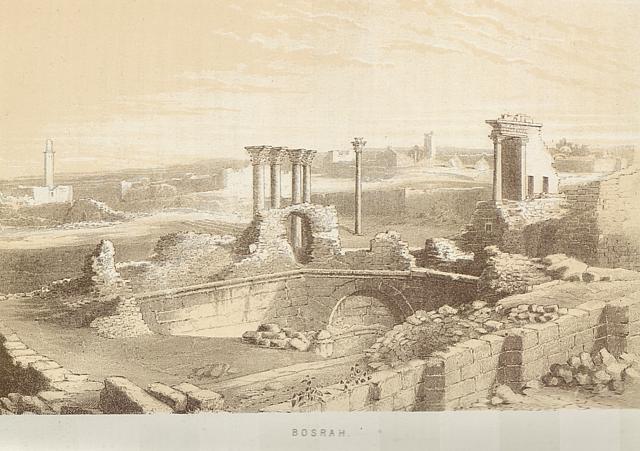
,-where-the-manna...-painting-artwork-print.jpg)
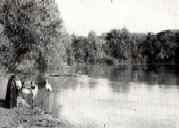
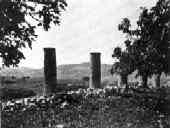
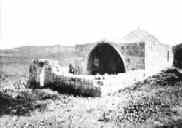

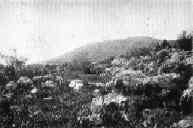
No comments:
Post a Comment